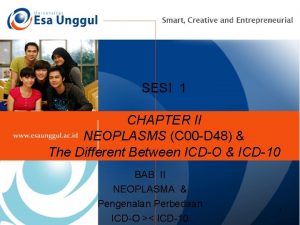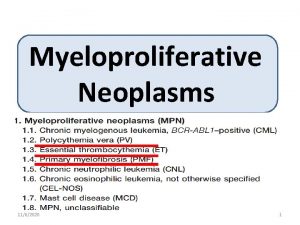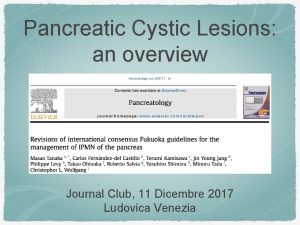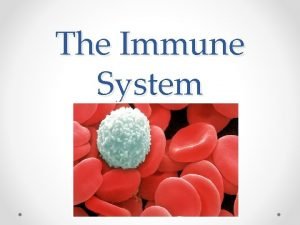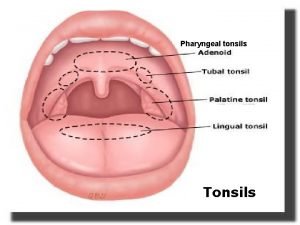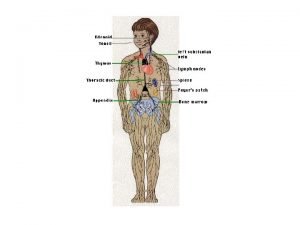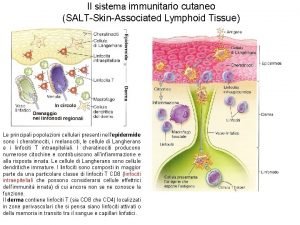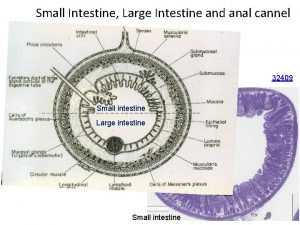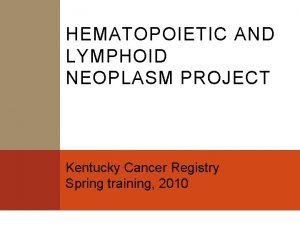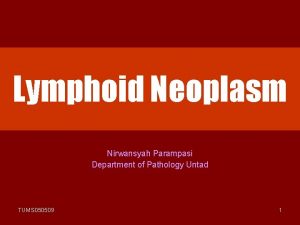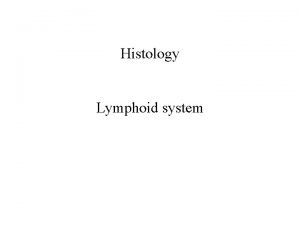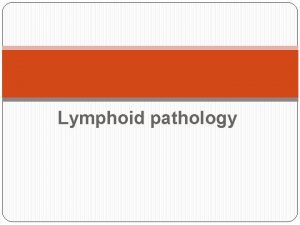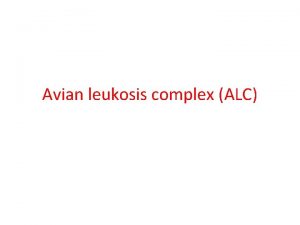Hematopoietic and Lymphoid Neoplasm Project Introduction to the























- Slides: 23

Hematopoietic and Lymphoid Neoplasm Project

Introduction to the WHO Classification of Tumors of Hematopoietic and Lymphoid Tissues 4 th edition 2

Hematopoietic and Lymphoid Lineages, Part I Steven Peace, CTR Westat September 2009 3

Objectives • • Understand stem cell hematopoiesis Understand proliferation Understand differentiation Provide a History of Classification of Tumors of Hematopoietic and Lymphoid Tissues • Understand the delineation of cell lines (lineage) in relation to the WHO Classification 4

Objectives (2) • Introduce WHO Classification of Tumors of Hematopoietic and Lymphoid Tissues, 4 th ed. • Introduce NEW ICD-O histology codes • Introduce NEW reportable conditions 5

Stem Cell Hematopoiesis • • What is a hematopoietic stem cell? Where are hematopoietic stem cells found? What is Hematopoiesis? Hematopoietic stem cells give rise to ALL blood cell types including; • Myeloid lineages • Lymphoid lineages 6

Hematopoietic stem cells give rise to two major progenitor cell lineages, myeloid and lymphoid progenitors Regenerative Medicine, 2006. http: //www. dentalarticles. com/images/hematopoiesis. png 7

Proliferation and Differentiation • • Regulation of proliferation Regulation of differentiation Both affect development along cell line Turn on/Turn off • Growth factors • Genes (including mutations) • Proteins • Ongogenesis – becoming malignant 8

Blood Lines – Donald Metcalf, Alpha. MED Press, 2005 Figure 3. 2 The eight major hematopoietic lineages generated by self-renewing multipotential stem cells. B Copyright © 2008 by Alpha. Med Press http: //www. alphamedpress. org 9

Cell Line Differentiation • Cellular differentiation is the process by which an immature cell becomes a more mature cell • Differentiation changes a cell's size, shape, membrane potential, metabolic activity, and responsiveness to signals or signal pathways 10

B-cell Differentiation 11

T-cell Differentiation 12

Classification of Tumors • Development of a World Standard • 1951 – Dameshek – clinical phenotype • 1960 – Philadelphia (Ph 1) chromosome • 1966 – Rappaport Classification • 1974 – Kiel Classification System • 1974 – Lukes and Collins System • 1976 – Revised Rappaport Classification • 1976 – French – American – British Classification 13

Classification of Tumors (2) • Development of a World Standard • 1982 – Working Formulation • 1994 – REAL – Revised European-American Classification of Lymphoid Neoplasms • 2001 – WHO Classification of Tumors of Hematopoetic and Lymphoid Tissues, 3 rd edition, 2001 14

Classification of Tumors (3) • 2008 – WHO Classification of Tumors of Hematopoietic and Lymphoid Tissues, 4 th edition, October 2008 15

2008 WHO Classification • 12 Classification Groups • 6 myeloid • 6 lymphoid • WHO Tables include borderline conditions not of immediate interest as reportable diseases • WHO Classification of Tumors Tables and 2010 Hematopoietic and Lymphoid Tissue Lineage Tables are IDENTICAL for malignant conditions 16

2008 WHO Classification - Myeloid • Myeloproliferative Neoplasms • Myeloid and Lymphoid Neoplasms with Eosinophilia and Abnormalities of PDGFRA, PDGFRB or FGFR 1 • Myelodysplastic/Myeloproliferative Neoplasms • Myelodysplastic Syndromes • Acute Myeloid Leukemia and Related Precursor Neoplasms • Acute Leukemias of Ambiguous Lineage 17

2008 WHO Classification - Lymphoid • • • Precursor Lymphoid Neoplasms Mature B-Cell Neoplasms Mature T-Cell and NK-Cell Neoplasms Hodgkin Lymphoma Histiocytic and Dendritic Cell Neoplasms Post-Transplant Lymphoproliferative Disorders 18

New Histology Term ICD-O-Code Acute myeloid leukemia (megakaryoblastic) with t(1; 22)(p 13; q 13); RBM 15 -MKL 1 9911/3 Acute myeloid leukemia with inv(3)(q 21 q 26. 2) or t(3; 3)(q 21; q 26. 2); RPN 1 EVI 1 9869/3 Acute myeloid leukemia with t(6; 9)(p 23; q 34) DEK-NUP 214 9865/3 ALK positive large B-cell lymphoma 9737/3 B lymphoblastic leukemia/lymphoma with t(12; 21)(p 13; q 22); TEL-AML 1 (ETV 6 -RUNX 1) 9814/3 B lymphoblastic leukemia/lymphoma with t(9; 22)(q 34; q 11. 2); BCR-ABL 1 9812/3 B lymphoblastic leukemia/lymphoma with t(v; 11 q 23); MLL rearranged 9813/3 B lymphoblastic leukemia/lymphoma, NOS 9811/3 B lymphoblastic leukemia/lymphoma with hyperdiploidy 9815/3 B lymphoblastic leukemia/lymphoma with hypodiploidy (hypodiploid ALL) 9816/3 B lymphoblastic leukemia/lymphoma with t(1; 19)(q 23; p 13. 3); E 2 A PBX 1 (TCF 3 PBX 1) 9818/3 B lymphoblastic leukemia/lymphoma with t(5; 14)(q 31; q 32); IL 3 -IGH 9817/3 Fibroblastic reticular cell tumor 9759/3 Hydroa vacciniforme-like lymphoma 9752/3 Intravascular large B-cell lymphoma 9712/3 Large B-cell lymphoma arising in HHV 8 -associated multicentric Castleman disease 9738/3 Mixed phenotype acute leukemia with t(9; 22)(q 34; q 11. 2); BCR-ABL 1 9806/3 Mixed phenotype acute leukemia with t(v; 11 q 23); MLL rearranged 9807/3 Mixed phenotype acute leukemia, B/myeloid, NOS 9808/3 Mixed phenotype acute leukemia, T/myeloid, NOS 9809/3 Myeloid and lymphoid neoplasm with FGFR 1 abnormalities 9967/3 Myeloid and lymphoid neoplasms with PDGFRB rearrangement 9965/3 Myeloid leukemia associated with Down Syndrome 9898/3 Myeloid and lymphoid neoplasms with PDGFRB arrangement 9966/3 Plasmablastic lymphoma 9735/3 Polymorphic PTLD 9971/3 19

New ICD-O Codes New Histology Term ICD-O-Code Primary cutaneous gamma-delta T-cell lymphoma 9726/3 Primary cutaneous follicle centre lymphoma 9597/3 Refractory neutropenia 9991/3 Refractory thrombocytopenia 9992/3 Systemic EBV positive T-cell lymphoproliferative disease of childhood 9724/3 T lymphoblastic leukemia/lymphoma 9837/3 T-cell/histiocyte rich large B-cell lymphoma 9688/3 20

Newly Reportable (new /3) Histology Term Langerhans cell histiocytosis, NOS Myeloproliferative neoplasm, unclassifiable / Myelodysplastic/Myeloproliferative neoplasm, unclassifiable T-cell large granular lymphocytic leukemia/ Chronic lymphoproliferative disorder of NKcells ICD-O Code 9751/3 9975/3 9831/3 21

References & More Information • WHO Classification of Tumors of Hematopoietic and Lymphoid Tissues , 4 th edition, S. Swerdlow, E. Campo, N. Lee Harris, E. Jaffe, S. Pileri, H. Stein, J. Thiele, J. Vardiman, IAR C, Lyon, France, 2008 • 2010 Hematopoietic and Lymphoid Neoplasm Case Reportability and Coding Manual, C. Hahn Johnson, M. Adamo, S. Peace, NCI SEER, 2009 • Advances in Understanding and Management of Myeloproliferative Neoplasms, Alessandro M. Vannucchi, Paola Guglielmelli and Ayalew Tefferi, CA Cancer J Clin 2009; 59; 171 -191; Apr 15, 2009 • Proposed Classification of Lymphoid Neoplasms for Epidemiollogic Research from the International Lymphoma Epidemiology Consortium (Inter-Lymph), L. Morton, J. Turner, J. Cernan, Blood, DOI 10. 1182/200611 -0515672; Mar 27, 2007 22

Conclusion • The new hematopoietic and lymphoid neoplasm rules go into effect for cases diagnosed January 1, 2010, and after • Email address for questions askseerctr@imsweb. com 23
 Automation in hematology wikipedia
Automation in hematology wikipedia Bronchogenic neoplasm
Bronchogenic neoplasm Plasma cell neoplasm
Plasma cell neoplasm Excessive and frequent artinya
Excessive and frequent artinya Kode icd 10 tumor leher
Kode icd 10 tumor leher Malignant neoplasm of the blood-forming organs
Malignant neoplasm of the blood-forming organs Malignant neoplasm of liver
Malignant neoplasm of liver Myeloproliferative disease
Myeloproliferative disease Md frcpc definition
Md frcpc definition Intraductal papillary mucinous neoplasm
Intraductal papillary mucinous neoplasm Myeloproliferative neoplasm
Myeloproliferative neoplasm Enlargement of a lymphoid organ in the luq
Enlargement of a lymphoid organ in the luq Largest lymphoid organ
Largest lymphoid organ Lymphatic tissue in pharynx
Lymphatic tissue in pharynx Lymphoid tissue in large intestine
Lymphoid tissue in large intestine Central lymphoid organs
Central lymphoid organs Salt skin associated lymphoid tissue
Salt skin associated lymphoid tissue Lymphatic system organs and functions
Lymphatic system organs and functions Generative lymphoid organs
Generative lymphoid organs Crypts of lieberkuhn
Crypts of lieberkuhn Lymphoid nodule colon
Lymphoid nodule colon Lymphoid nodule colon
Lymphoid nodule colon Palatine tonsil
Palatine tonsil Appendix secondary lymphoid organ
Appendix secondary lymphoid organ




